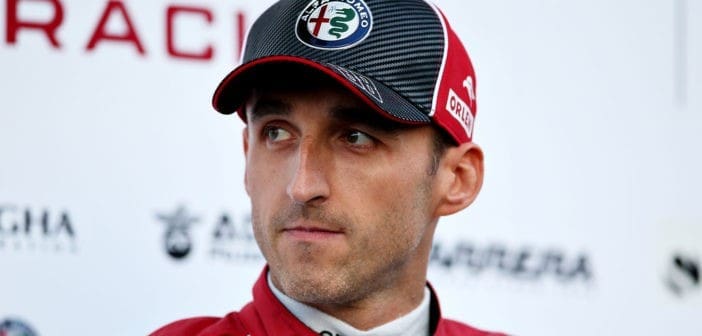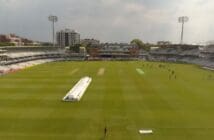As horizons are expanding and we learn more about our roots, Poland plays a vital part in producing some of the world’s greatest sportsmen. The former F1 driver Robert Kubica is definitely one of them as we look at how he made his career so special.
Humble Beginnings
Kubica developed a passion for cars at the young age of four as his father Artur decided to buy him a small off-road car which Robert spent hours playing with, maneuvering around plastic bottles.
After entering the Polish Karting Championship, he won six titles in three years and decided to join a more competitive Championship in Italy.
In 1998, Kubica became the first foreigner to win the International Italian Junior Karting Championship. He had won many more titles before leaving karting in the year 2000.
Turning Pro
Kubica started his professional career in 2000, as a test driver for a Formula Renault 2000 car. During his first season, he scored his maiden pole position and also secured a place on Renault’s development programme.
In 2002 Kubica won four races and scored a second place in the Italian Formula Renault 2000. He was also seventh in the Formula Renault Eurocup. At the end of the year, he took part in a Brazilian Formula Renault 2000 race held at the Interlagos circuit. This one-off appearance resulted in a dominant win.
In 2005, he won the World Series by Renault which earned him the right to test with their Formula One team.
Formula One Debut
In 2006, Kubica officially got his break in Formula One becoming BMW Sauber’s reserve driver for the season. He became Poland’s first-ever Formula One driver when he jumped into the Sauber car for the Hungarian Grand Prix. The pole stepped in for his teammate Jacques Villeneuve, who decided to sit the race out due to an ongoing headache.
He qualified in ninth place; out-qualifying his more experienced teammate Nick Heidfeld in the process. The Pole finished the race in seventh but was disqualified for having an underweight car.
Villeneuve decided to leave the BMW Sauber team soon after the race, and Kubica’s position in the team for the remainder of the season was confirmed by BMW.
In his third race, he earned a third-place finish at the Italian Grand Prix becoming the first-ever Polish driver to step on the podium.
The 2007 season was injury-plagued for Kubica, but the entirety of Poland continued cheering on their sole driver in the sport.
In the Canadian Grand Prix, a tangle with Toyota’s Jarno Trulli coming up to the hairpin saw the Pole hit the tyre barrier on the right-hand side of the circuit at a speed of 187 mph. Luckily the driver was able found in a stable condition after the accident.
A year later, after the horrific accident saw the BMW Sauber driver return to the circuit to secure his first and only win in the sport.
The win was a great one for the Polish people as they celebrated a Robert Kubica win, a one-two for BMW Sauber and Kubica taking the Championship lead.
The 2010 season saw the Pole step out of the BMW Sauber car and moving to Renault. He scored three podiums that season accumulating 136 Championship points finishing eighth in the final standings.

Credit: Autosport
Near-Fatal Crash In Rally Racing
His life was nearly taken away from him when he raced in the first stage of the Ronde di Andora rally. He was trapped in his Skoda car for nearly an hour. Kubica’s car left the road at high speed and hit a crash barrier, near the church of San Sebastiano.
He was flown by helicopter to Santa Corona Hospital in Pietra Ligure near Savona, where it was confirmed that he had suffered a partial amputation of his forearm, compound fractures to his right elbow, shoulder and leg, as well as significant loss of blood.
The severity of his injuries was the result of the crash barrier penetrating the car’s cockpit, and hitting Kubica while leaving his co-driver unscathed. Kubica underwent a seven-hour operation by seven doctors split into two teams, without complications. Two more lengthy operations to repair fractures to his leg, shoulder and arm were performed successfully a few days later. The condition of his hand was not clear for some time and as a result, he missed the 2011 season.
In an interview in 2018 with Kubica, he revealed that he had his 2012 F1 plans sorted and that he signed with Ferrari for that season.

Credit: Planet F1
Return To Formula One After Lengthy Break
In 2017, Kubica would return to test the Renault F1 car ahead of the season in pre-season testing. A year later, he would become Williams’ reserve driver. The Spanish Grand Prix was his first practice session, and he outperformed his teammate Lance Stroll in the session.
He would return to racing competitively in 2019 as he was promoted to become Williams’ second driver alongside George Russell and reserve driver Nicholas Latifi.
Kubica only managed one point in the whole season as Williams finished bottom in the Constructors’ Championship, meaning themselves only managed one point on the board.
Currently, the Pole is Alfa Romeo’s Reserve driver. He competed at the pre-season test at the Circuit de Barcelona-Catalunya and set the fastest lap time during the fourth day of testing.
Other Sports
News
![Prost International [PINT]](https://prostinternational.com/wp-content/uploads/2021/08/PINTtFontLogoRoboto1536x78.jpg)



